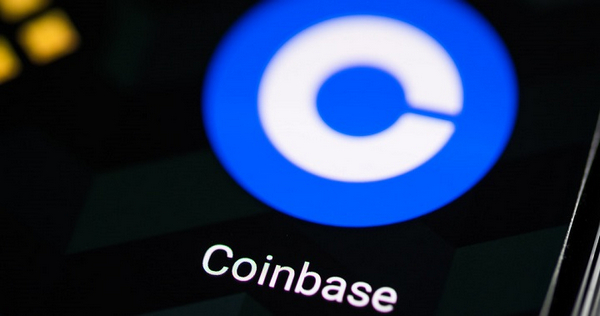-
 Bitcoin
Bitcoin $87,244.5333
2.45% -
 Ethereum
Ethereum $1,637.7488
1.62% -
 Tether USDt
Tether USDt $1.0000
0.03% -
 XRP
XRP $2.1158
1.77% -
 BNB
BNB $603.9294
1.80% -
 Solana
Solana $139.6467
-0.83% -
 USDC
USDC $1.0001
0.03% -
 Dogecoin
Dogecoin $0.1604
1.32% -
 TRON
TRON $0.2446
0.47% -
 Cardano
Cardano $0.6393
1.43% -
 Chainlink
Chainlink $13.5184
3.67% -
 UNUS SED LEO
UNUS SED LEO $9.4104
0.73% -
 Avalanche
Avalanche $19.9898
0.79% -
 Stellar
Stellar $0.2504
1.90% -
 Toncoin
Toncoin $3.0249
1.29% -
 Shiba Inu
Shiba Inu $0.0...01264
2.61% -
 Hedera
Hedera $0.1710
3.24% -
 Sui
Sui $2.2135
2.61% -
 Bitcoin Cash
Bitcoin Cash $339.8114
-0.04% -
 Polkadot
Polkadot $3.9114
0.06% -
 Litecoin
Litecoin $79.0408
3.25% -
 Hyperliquid
Hyperliquid $17.8765
-3.28% -
 Bitget Token
Bitget Token $4.5484
-1.05% -
 Dai
Dai $1.0000
0.00% -
 Ethena USDe
Ethena USDe $0.9994
0.03% -
 Pi
Pi $0.6376
-1.81% -
 Monero
Monero $215.5604
-1.28% -
 Uniswap
Uniswap $5.4229
1.86% -
 Pepe
Pepe $0.0...07769
3.39% -
 Aptos
Aptos $5.1268
4.56%
How to play Coinbase contracts tutorial
Coinbase Contracts offers a platform for trading futures contracts on cryptocurrencies, empowering users to speculate or hedge on future cryptocurrency prices.
Nov 07, 2024 at 05:26 pm

How to Play Coinbase Contracts Tutorial
Coinbase Contracts is a platform that allows users to trade futures contracts on cryptocurrencies. Futures contracts are agreements to buy or sell an asset at a set price in the future. They can be used for speculation or hedging.
To start trading Coinbase Contracts, you will need to create an account and fund it with cryptocurrency. Once you have funded your account, you can start trading contracts.
Here is a step-by-step tutorial on how to trade Coinbase Contracts:
1. Create a Coinbase account
The first step is to create a Coinbase account. You can do this by visiting the Coinbase website and clicking on the "Sign Up" button. You will need to provide your name, email address, and password. Once you have created an account, you will need to verify your identity. You can do this by providing a government-issued ID and a selfie.
2. Fund your Coinbase account
Once you have verified your identity, you will need to fund your Coinbase account. You can do this by transferring cryptocurrency from another wallet or by purchasing cryptocurrency with a credit card or debit card.
3. Enable futures trading
Once you have funded your account, you will need to enable futures trading. To do this, click on the "Settings" tab and then click on the "Trading" tab. Under the "Futures" section, click on the "Enable Futures Trading" button.
4. Choose a contract
Once you have enabled futures trading, you will need to choose a contract to trade. You can do this by clicking on the "Contracts" tab. There are a variety of contracts available, including contracts for Bitcoin, Ethereum, and Litecoin.
5. Place an order
Once you have chosen a contract, you will need to place an order. You can do this by clicking on the "Buy" or "Sell" button. You will need to specify the quantity of the contract that you want to buy or sell and the price at which you want to buy or sell.
6. Monitor your order
Once you have placed an order, you will need to monitor it. You can do this by clicking on the "Orders" tab. You will be able to see the status of your order and the current price of the contract.
7. Close your order
Once you are ready to close your order, you can do this by clicking on the "Close" button. You will need to specify the quantity of the contract that you want to close and the price at which you want to close.
Trading Coinbase Contracts can be a profitable way to speculate on the future price of cryptocurrencies. However, it is important to remember that trading contracts is also risky. You should only trade with money that you can afford to lose.
Disclaimer:info@kdj.com
The information provided is not trading advice. kdj.com does not assume any responsibility for any investments made based on the information provided in this article. Cryptocurrencies are highly volatile and it is highly recommended that you invest with caution after thorough research!
If you believe that the content used on this website infringes your copyright, please contact us immediately (info@kdj.com) and we will delete it promptly.
- The Solana network briefly surpassed Ethereum in total staked value, sparking debate over whether it is actually bullish or bearish.
- 2025-04-21 12:45:13
- Filecoin and Algorand Ground Blockchain in Reality, Qubetics Skyrockets As Top Cryptos to Watch
- 2025-04-21 12:45:13
- Bitcoin reclaims the $87,000 level, while XRP Flashes Bearish Signals and Dogecoin Celebrates “Dogeday”
- 2025-04-21 12:40:13
- Pi Network (PI) Price Briefly Spikes 4% After Releasing Long-Awaited Mainnet Migration Roadmap
- 2025-04-21 12:40:13
- Top Crypto Coins 2025: Web3 ai, Tron, Dogecoin & Kaspa
- 2025-04-21 12:35:13
- Ethereum's Make-or-Break Moment: Can It Regain Its Edge?
- 2025-04-21 12:35:13
Related knowledge

How does Tail Protection reduce the loss of liquidation?
Apr 11,2025 at 01:50am
Introduction to Tail Protection in CryptocurrencyTail Protection is a mechanism designed to mitigate the risks associated with liquidation in cryptocurrency trading. Liquidation occurs when a trader's position is forcibly closed by the exchange due to insufficient margin to cover potential losses. This often happens in leveraged trading, where traders b...

What are the consequences of an imbalance in the long-short ratio?
Apr 13,2025 at 02:50pm
The long-short ratio is a critical metric in the cryptocurrency trading world, reflecting the balance between bullish and bearish sentiments among traders. An imbalance in this ratio can have significant consequences on the market dynamics, affecting everything from price volatility to trading strategies. Understanding these consequences is essential fo...

How to judge the market trend by the position volume?
Apr 11,2025 at 02:29pm
Understanding how to judge the market trend by position volume is crucial for any cryptocurrency trader. Position volume, which refers to the total number of open positions in a particular cryptocurrency, can provide valuable insights into market sentiment and potential price movements. By analyzing this data, traders can make more informed decisions ab...

Why does a perpetual contract have no expiration date?
Apr 09,2025 at 08:43pm
Perpetual contracts, also known as perpetual futures or perpetual swaps, are a type of derivative product that has gained significant popularity in the cryptocurrency market. Unlike traditional futures contracts, which have a fixed expiration date, perpetual contracts do not expire. This unique feature raises the question: why does a perpetual contract ...

Why is the full-position mode riskier than the position-by-position mode?
Apr 13,2025 at 03:42pm
Why is the Full-Position Mode Riskier Than the Position-by-Position Mode? In the world of cryptocurrency trading, the choice between full-position mode and position-by-position mode can significantly impact the risk profile of a trader's portfolio. Understanding the differences between these two modes is crucial for making informed trading decisions. Th...

How is the liquidation price calculated?
Apr 12,2025 at 01:35am
Introduction to Liquidation PriceLiquidation price is a critical concept in the world of cryptocurrency trading, particularly when dealing with leveraged positions. Understanding how this price is calculated is essential for traders to manage their risk effectively. The liquidation price is the point at which a trader's position is forcibly closed by th...

How does Tail Protection reduce the loss of liquidation?
Apr 11,2025 at 01:50am
Introduction to Tail Protection in CryptocurrencyTail Protection is a mechanism designed to mitigate the risks associated with liquidation in cryptocurrency trading. Liquidation occurs when a trader's position is forcibly closed by the exchange due to insufficient margin to cover potential losses. This often happens in leveraged trading, where traders b...

What are the consequences of an imbalance in the long-short ratio?
Apr 13,2025 at 02:50pm
The long-short ratio is a critical metric in the cryptocurrency trading world, reflecting the balance between bullish and bearish sentiments among traders. An imbalance in this ratio can have significant consequences on the market dynamics, affecting everything from price volatility to trading strategies. Understanding these consequences is essential fo...

How to judge the market trend by the position volume?
Apr 11,2025 at 02:29pm
Understanding how to judge the market trend by position volume is crucial for any cryptocurrency trader. Position volume, which refers to the total number of open positions in a particular cryptocurrency, can provide valuable insights into market sentiment and potential price movements. By analyzing this data, traders can make more informed decisions ab...

Why does a perpetual contract have no expiration date?
Apr 09,2025 at 08:43pm
Perpetual contracts, also known as perpetual futures or perpetual swaps, are a type of derivative product that has gained significant popularity in the cryptocurrency market. Unlike traditional futures contracts, which have a fixed expiration date, perpetual contracts do not expire. This unique feature raises the question: why does a perpetual contract ...

Why is the full-position mode riskier than the position-by-position mode?
Apr 13,2025 at 03:42pm
Why is the Full-Position Mode Riskier Than the Position-by-Position Mode? In the world of cryptocurrency trading, the choice between full-position mode and position-by-position mode can significantly impact the risk profile of a trader's portfolio. Understanding the differences between these two modes is crucial for making informed trading decisions. Th...

How is the liquidation price calculated?
Apr 12,2025 at 01:35am
Introduction to Liquidation PriceLiquidation price is a critical concept in the world of cryptocurrency trading, particularly when dealing with leveraged positions. Understanding how this price is calculated is essential for traders to manage their risk effectively. The liquidation price is the point at which a trader's position is forcibly closed by th...
See all articles






















































































